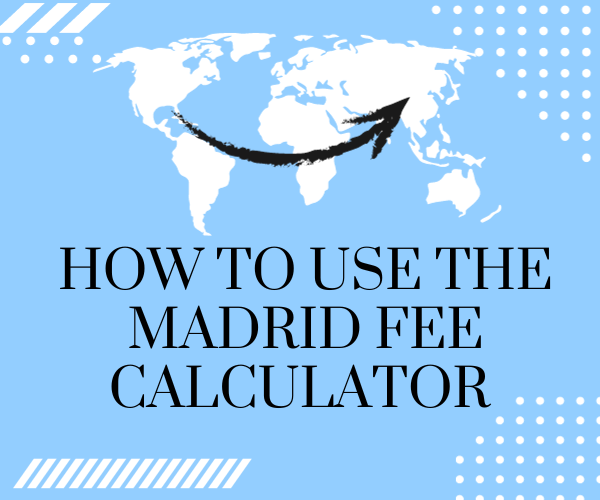A trademark is an identity of a company or an individual’s business that helps consumers differentiate the trademarked goods or services from others. Thus, trademark registration is necessary to protect its unauthorized usage by others. However, trademark registration provides a territorial right, whereby when a trademark is registered in India, the registration provides protection only within India. A trademark owner needs to obtain international trademark protection for its protection outside India. When trademark owners have international registration, they can apply for the mark outside India and ensure that third parties do not apply for the same trademark in the global market. The Madrid Agreement provides facilities that aid in the International registration of trademarks.
The Madrid System is centrally administered by the World Intellectual Property Organization (WIPO). This mechanism can be used by an individual or a company to obtain many or, to say, bundle of trademark registrations in separate jurisdictions, which create a basis for the “international registration” of marks. The Madrid System is a very simple and great way to register one’s trademark worldwide.
The Madrid Agreement
The Madrid Agreement for the International Registration of Trademarks is a crucial treaty that simplifies and streamlines the global protection of trademarks. Signed in 1891, it aimed to provide a unified and efficient way for trademark owners to secure their marks in multiple countries. The Madrid System, governed by the Madrid Agreement Concerning the International Registration of Marks and the Madrid Protocol, offers a convenient and cost-effective solution for registering and managing trademarks internationally. The system allows for modification, renewal, or expansion of trademark portfolios internationally, with the benefit of filing a single application and protection in all member countries. Eligible users have business operations in any of the member countries and enjoy a smooth working experience that is transparent and foolproof.
Navigating the Types of Fees and Payment Process of the Madrid System
Basic Application Fee – This fee is required to process an International trademark application. it is a standard fee applicable to all applications. The fee covers submitting the international trademark application and includes one class of goods or services. Please note that the Madrid System employs a class-based system, meaning fees are applied per class. The exact cost of the basic application fee can fluctuate based on currency and the contracting party through which the application is filed. It typically comprises two components: the basic fee and the complementary fee for each Contracting party designated.
Additional Class Fees – If the trademark spans multiple classes of goods or services, the applicant will be required to pay an additional class fee for each class beyond the first one. The fee structure for additional classes may differ depending on the participating parties involved in the application. Grasping the fee structure for additional classes is vital because it can significantly influence the overall cost of international trademark registration.
Subsequent Designation Fees – The Madrid System offers trademark owners the opportunity to extend their international protection by adding new countries to their existing international registration. This process, known as subsequent designation, incurs a fee for each designated country. The fee structure for subsequent designations may vary, and it is essential to consult the current schedule of fees to understand the costs associated with expanding trademark protection.
Renewal Fees – Trademark protection under the Madrid System is not indefinite. To maintain international registration, the trademark owners must pay renewal fees at specific intervals. These fees are generally due every ten years, starting from the date of your international registration. Similar to other fees, the cost of renewal fees may fluctuate based on currency and the contracting parties involved. Keeping track of renewal deadlines and budgeting for these expenses is crucial to ensuring the continuous protection of trademarks.
Payment Methods – The Madrid System offers various payment methods to accommodate applicants from around the world. Common payment options include bank transfers, credit card payments, and electronic payment systems. It is advisable to check with the World Intellectual Property Organization (WIPO) or the relevant national office to confirm the accepted payment methods and currencies.
International application must be accompanied by the payment to WIPO of a set of fees (in Swiss francs) which include:
- a basic fee of 653 Swiss francs, if no reproduction of the mark is in colour, or 903 Swiss francs, if any reproduction of the mark is in colour
- an individual fee for each designated Contracting Party having fixed individual fees
- a complementary fee of 100 Swiss francs for each designated Contracting Party not having fixed individual fees
- a supplementary fee of 100 Swiss francs for each class of goods and services beyond three classes, except if there is only designate Contracting Parties having fixed individual fees.
WIPO guides the applicants in every stage for a smooth registration of trademarks. They provide a detailed explanation as well as create awareness in the public regarding the importance of trademark protection at the International level on their website. Read about Indian Trademark Registration fee structure here.
The Madrid System Fee Calculator for Trademarks
The Madrid System for the International Registration of Trademarks is a potent mechanism for safeguarding your brand across multiple countries. Understanding the costs associated with international trademark registration is crucial for budgeting and decision-making. Fortunately, the Madrid System provides a user-friendly fee calculator tool that simplifies the fee estimation process.
Accessing the Fee Calculator – The Madrid System Fee Calculator is a web-based tool accessible on the official website of the World Intellectual Property Organization (WIPO). This user-friendly resource is freely available to all trademark applicants, whether they are individuals, businesses, or intellectual property professionals. To access the Fee Calculator, visit the WIPO website and navigate to the “Madrid System” section, where you will find a dedicated link to the tool.
Key Features of the Fee Calculator –
- User-Friendly Interface: The Fee Calculator is designed to be intuitive and easy to use. It does not require any special software installation or technical expertise. Users can access it directly through a web browser.
- Language Options: The tool is available in multiple languages, making it accessible to a global audience. Users can select their preferred language for a seamless experience.
- Currency Conversion: Since the Madrid System involves applicants from various countries; the Fee Calculator provides real-time currency conversion. This ensures that users can view estimated fees in their preferred currency, making budget planning more convenient.
- Comprehensive Fee Estimation: The Fee Calculator covers all relevant fees associated with the Madrid System, including the basic application fee, additional class fees, subsequent designation fees, and renewal fees. Users can specify the details of their application to receive accurate cost estimates.
How to Use the Fee Calculator
The fee calculator helps to estimate the cost of registering your mark through the Madrid System, a simple, easy and cost effective registration process. The calculator also helps in estimating other costs related to managing the International trademarks such as the renewal, subsequent designation, the second fee tax for certain contracting parties and all the Madrid transactions with fees.
A brief break up procedure of the Fee Calculator is provided below:
Mark Information (Type of transactions): This is the first step under the fee calculator and it includes the type of transactions which are the new application, subsequent designation, second part fee, and renewal. The user can pick one from the dropdown box available under the heading.
Indicate the Applicant’s Office: Specify the trademark office where the basic application or subsequent designation was filed. The number of classes covered by the mark is also to be specified in this step. It also includes the details of whether the mark is a collective, certification, or guarantee mark.
Select Target Countries: Choose the countries where it is intended to seek trademark protection. The addition and removal of the countries can be done accordingly by the user
View Estimated Fees: The final step involves calculating the fees and charges with respect to the details applied by the user. The Fee Calculator will generate a breakdown of estimated fees, providing a clear overview of the costs associated with your international trademark registration.
The Madrid System Fee Calculator is an invaluable tool for trademark applicants looking to navigate the complexities of international trademark registration. By providing real-time fee estimates, currency conversion, and a user-friendly interface, it empowers applicants to make informed decisions and plan their budget effectively. Irrespective of a small business expanding globally or a seasoned intellectual property professional, the Fee Calculator simplifies the fee estimation process and contributes to a smoother experience within the Madrid System.
Conclusion
As businesses continue to expand globally and the importance of brand recognition grows, the Madrid Protocol stands as a valuable tool in facilitating cross-border trademark protection, ultimately contributing to a more interconnected and secure global space. The harmonized system of the Madrid protocol not only simplifies the administrative burden but also reduces the financial constraints associated with Individual filing in each target country. The system streamlines the process of registration of trademarks by allowing the applicants to file a single application in their home country and extend protection to numerous member countries.




